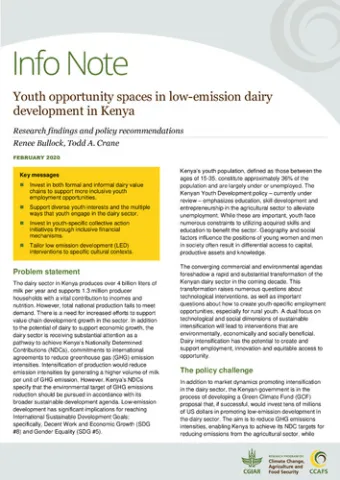Youth opportunity spaces in low-emission dairy development in Kenya: Research findings and policy recommendations

Abstract
The dairy sector in Kenya produces over 4 billion liters of milk per year and supports 1.3 million producer households with a vital contribution to incomes and nutrition. However, total national production fails to meet demand. There is a need for increased efforts to support value chain development growth in the sector. In addition to the potential of dairy to support economic growth, the dairy sector is receiving substantial attention as a pathway to achieve Kenya’s Nationally Determined Contributions (NDCs), commitments to international agreements to reduce greenhouse gas (GHG) emission intensities. Intensification of production would reduce emission intensities by generating a higher volume of milk per unit of GHG emission. However, Kenya’s NDCs
specify that the environmental target of GHG emissions reduction should be pursued in accordance with its broader sustainable development agenda. Low-emission development has significant implications for reaching International Sustainable Development Goals; specifically, Decent Work and Economic Growth (SDG #8) and Gender Equality (SDG #5).
